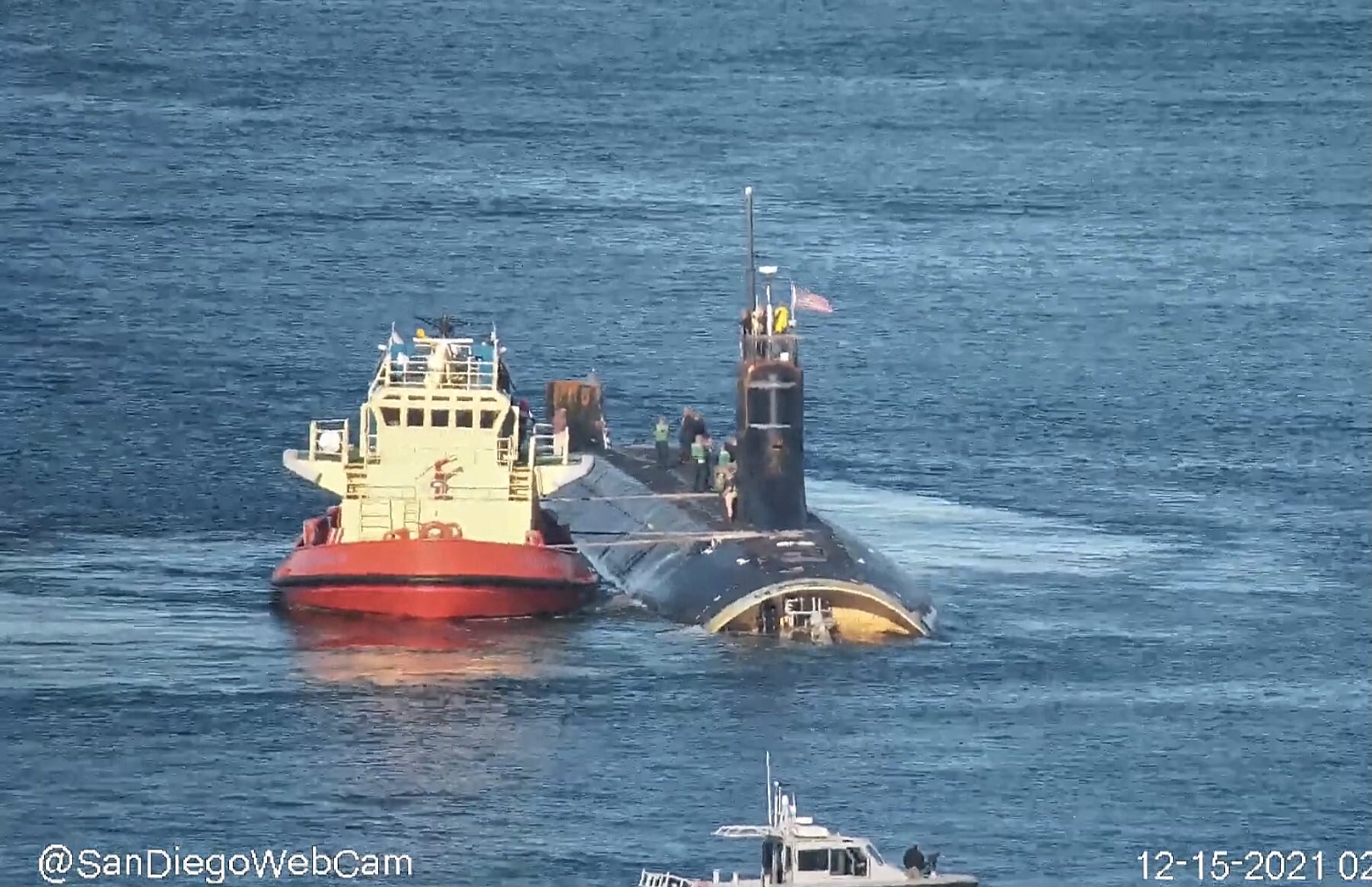
Attack submarine USS Connecticut (SSN-22) pulled into its homeport in Bremerton, Wash., on Tuesday after transiting the Pacific Ocean on the surface due to damage from a collision in the South China Sea.
Connecticut reached Naval Base Kitsap in Bremerton after pulling into the San Diego harbor a little over a week ago following a surface transit from Guam.
“The Seawolf-class fast-attack submarine USS Connecticut (SSN 22) arrived in Bremerton, Wash., 21 Dec. Connecticut returned to Naval Base Kitsap following a regularly scheduled deployment in the Indo-Pacific Region,” Cmdr. Cindy Fields, a spokesperson for Submarine Force, U.S. Pacific Fleet, said in a statement.
USS Connecticut (SSN 22) Seawolf-class nuclear attack submarine southbound in Puget Sound heading to Bremerton, Washington – news story courtesy of @joshfarley – December 21, 2021 #ussconnecticut #ssn22https://t.co/oXJIh0hqHz pic.twitter.com/dBS56NgGjO
— WarshipCam (@WarshipCam) December 21, 2021
While Connecticut went through an initial round of repairs in Guam, the Navy in November announced the submarine would undergo more repairs in Bremerton. The boat was damaged when it hit an unmapped seamount in the South China Sea in October, an incident that led the Navy to relieve the submarine’s commanding officer, executive officer and chief of the boat.
The collision damaged the ballast tanks and forward section of the boat, USNI News previously reported. The submarine had to conduct the transit from Guam to San Diego, Calif., and San Diego to Bremerton entirely on the surface due to the damage, USNI News understands. The collision rendered the boat’s sonar dome inoperable, making it unsafe to travel underwater.
While the boat is slated to finish the rest of its unplanned repairs in Bremerton, the Navy’s public shipyards already face a backlog of work. Jay Stefany, the Navy’s acting acquisition executive, told Congress in October that fixing Connecticut at one of the public yards would likely affect the workflow.
“If we ended up doing [the Connecticut work] in one of the public shipyards that would certainly cause perturbations in all the other work in the shipyards,” Stefany told the House Armed Services readiness subcommittee at the time.
“It just shows how … the world gets a vote and things change and unexpected incidents create more demand for repairs… The attack subs have always been the poor cousin in the public shipyards in terms of getting priority, but we know particularly a Seawolf-class submarine is extremely valuable in terms of the mission in that part of the world,” he added.





